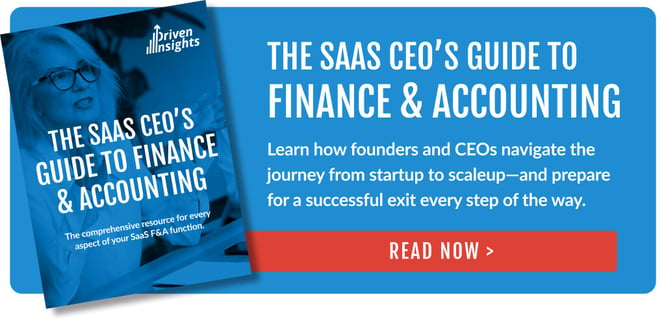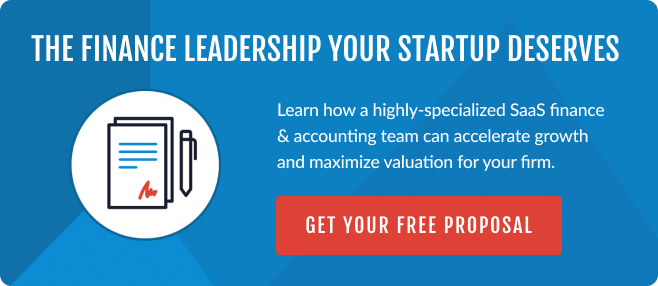
One of the most powerful ways to monitor the operational health of SaaS companies is through SaaS dashboards. Dashboards bring together your most important SaaS KPIs and present them in a clear and concise way that allows for data-driven decision-making. Stakeholders get clear data visualization of your key SaaS metrics, while leadership can selectively drill down into SaaS reporting to explore trends, problem areas, and opportunities.
However, SaaS dashboards aren’t a set-it-and-forget-it SaaS reporting solution. The metrics that matter most to your SaaS business will evolve over time, depending on your stage of growth—and your dashboards should too.
In this article, you’ll learn why dashboards are an essential tool for SaaS founders and stakeholders, how to use them, and, importantly, how to keep them focused on the right metrics to gauge business performance at every growth stage.
Why SaaS Dashboards are Important
SaaS dashboards are a critical tool for aligning your team and making informed decisions. The most useful dashboards provide for routine reporting in a consistent format that management, board members, and investors can easily understand, helping to:
- Highlight the metrics that matter most.
- Identify and manage risks and trends before they become major issues.
- Make data-driven decisions and track their impact.
- Understand when you're ready for the next stage of growth.
In short, SaaS dashboards serve as a primary source of truth upon which key business decisions are made.
How SaaS Dashboards Drive Growth
Display the most critical indicators of your SaaS company's financial performance at a glance. You'll understand the factors that are contributing most to revenue growth across your organization.
Track progress toward goals. You can measure performance against goals, benchmarks, or milestones, and compare budget-to-actual on key metrics.
Set departmental goals and hold everyone accountable. Define KPIs for each department and create individual dashboards to report on each.
Identify and mitigate financial risks. Exercise prudent cash management through clear reporting on cash runway and burn rate.
Improve your unit economics. Use dashboards to understand changes in CAC, LTV, churn and other key metrics that reflect revenue and costs on a per-customer or per-cohort basis.
Organize and visualize your data. Create engaging reports that provide context, summarize information, and drive decision-making across management, stakeholders, board, and investors.
Keep tabs on the market value of your business. Report accurately and consistently on the biggest single factor in valuation—Annual Recurring Revenue (ARR) growth.
Measure performance across several initiatives. Develop and report on SaaS metrics that track multiple projects, such as your product roadmap, customer satisfaction, and Net Promoter Score (NPS).
Use SaaS Dashboards to Understand Root Causes and Drive Action
When paired with the right systems, dashboards for SaaS businesses allow you to continuously ask “why” to get to the root cause of issues and surface opportunities. For example, if you see that the customer churn rate is increasing, you’ll want to respond. By digging in to see which customer segments are churning most, you’ll be able to isolate the problem and develop a more informed strategy.
In other words, your SaaS dashboards are an enabler. When focused on the right SaaS metrics for your growth stage, dashboards help to trigger the right conversations, allow you to analyze SaaS reporting data, make informed decisions, and turn it all into actions that generate positive outcomes.
Best Practices for SaaS Dashboards and Reporting
Whatever your growth stage, there are fundamental best practices for how to capture and report SaaS metrics. These qualities of an effective SaaS dashboard, and they include:
- Data-driven: Every metric in the dashboard for your SaaS company must be derived from quantifiable data sources, and supported by detailed financial reports.
- Reliable: SaaS KPIs must be based on accurate data.
- Timely: Your dashboard should be up-to-date so you can actively monitor and quickly respond to trends.
- Customized: SaaS metrics aren’t one-size-fits all. Your SaaS business is unique, and your dashboard should reflect that.
- Visual: SaaS metrics must be presented in a clear, consistent format. You and your stakeholders need clear data visualization to understand the underlying insights.
- Action-oriented: A SaaS dashboard must provide visibility into KPIs in a way that sparks questions, surfaces issues, highlights opportunities, and drives decisive action.
- Forward-looking: Your SaaS business and your market are constantly evolving. Your dashboard should facilitate forecasting to help reveal future opportunities.
Dashboard KPIs for Each Stage of SaaS Company Growth
There are three stages of SaaS business growth, each with well-defined objectives:
- Achieve product/market fit.
- Build a repeatable, scalable, and profitable sales process.
- Scale the business and the sales engine.
As your company concentrates on successfully navigating each stage, you’ll rely on a variety of different SaaS metrics to track progress and inform decisions. Some metrics will factor into multiple stages, but your dashboards won’t be effective unless they reflect all of the metrics that matter most at each stage.
SaaS Dashboard KPIs for Stage 1: Product/Market Fit
- Cash burn and runway: A snapshot of how much cash you have available at a specific point in time, how fast you’re spending it, and how long it will last.
- Annual Contract Value (ACV): What is your target ACV and how is your current average ACV faring relative to that goal?
- Renewal rate: How often customers are canceling their subscriptions vs. how much they are renewing.
- Number of customers: Your overall count of existing customers, that can also be segmented in multiple ways (new vs. renewal, across acquisition channels, by vertical, etc.).
Related article: Dive deeper into key SaaS metrics for Product/Market fit.
SaaS Dashboard KPIs for Stage 2: Building a Repeatable Sales Process
- Customer Acquisition Cost (CAC) & CAC Payback: The total cost of new customer acquisition and the time required to recover that cost.
- Gross Margin: After ARR growth rate, gross margin is often the second metric requested from prospective investors or buyers.
- Lifetime Value (LTV): The total amount of revenue that a customer represents over the course of their relationship with a business.
- Net new Annual Recurring Revenue (ARR): The net change in annual recurring revenue from new customers, expansion, and churn during a period.
- Pipeline metrics: KPIs to measure how efficiently and profitably prospects are moving through the marketing and sales pipeline.
- Churn: Yes, we can’t lose sight of churn rate at any stage.
SaaS Dashboard KPIs for Stage 3: Scaling the Business
- # Leads and Conversion by Stage: Demand gen and your sales process are the name of the game at this stage.
- Churn: Correct, you never outgrow the need to monitor revenue churn (and other types). But at this stage, our focus turns to expansion, with the goal of achieving negative churn.
- CAC Payback: Keep an eye on this while you scale.
- SaaS Magic Number: Sales efficiency becomes increasingly impactful at this stage.
- SaaS Rule of 40: Use to manage the tradeoff between growth and profitability.
Advice on Developing SaaS KPIs by Growth Stage
Product/Market Fit: Don’t worry about customer acquisition cost when you're still refining the product, dialing in the market, and the founder is doing most of the selling. The most important factor here is that people are paying money for your product and existing customers are renewing their subscriptions.
Repeatable Sales Process: Don’t invest in scaling the business until you have a proven, profitable sales process for acquiring customers. Unit economics are critical here. In particular, LTV to CAC ratio and CAC payback.
Scale the Sales Engine: Net new ARR growth is the most common measure of success at this stage, as it validates customer demand, product/market fit, and an effective sales process. One of the biggest issues, however, is that firms who have developed a strong sales process don't invest enough money here. The right KPIs are critical to ensuring you don’t scale too fast—or too slow.
As you accelerate growth, you’ll also need to closely monitor customer churn. Churning clients faster than you add them will result in a “leaky bucket” that undermines your growth efforts.
Developing Your SaaS Dashboards and Metrics
Whatever stage your SaaS business is in, high-level finance and accounting expertise is essential—from defining the right KPIs, to ensuring accurate and timely reporting, to developing dashboards that evolve to guide key decision making at every step of the way.
An outsourced CFO service for SaaS companies is the most cost-effective way to have it all. With a fully-integrated finance and accounting team, your business doesn’t have to wait for the finance leadership, oversight, and day-to-day systems it needs to grow efficiently and maximize valuation.
Learn more by scheduling your introduction to Driven Insights today. You’ll receive a free proposal and discover the best way to have all the finance resources your business deserves, today and as you grow.









